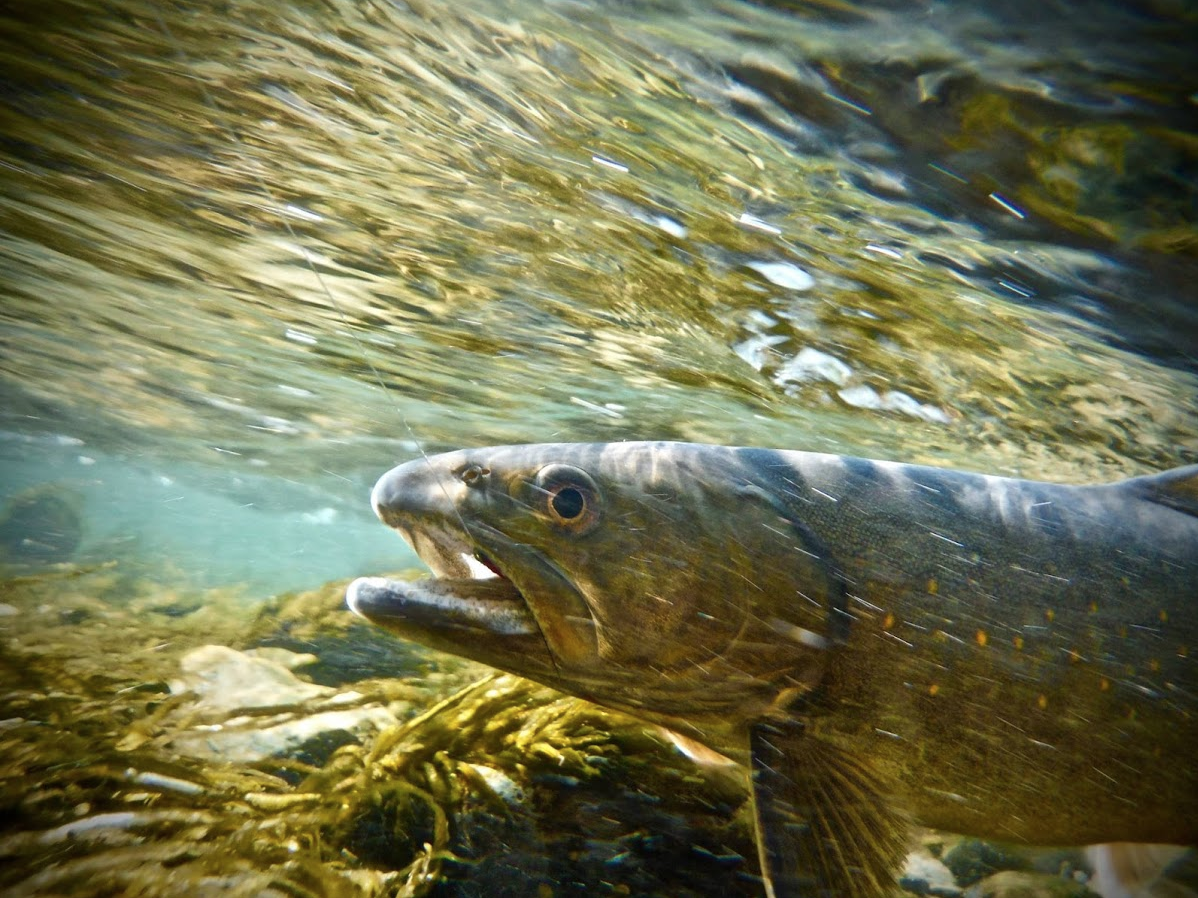Smaller streamers have their place when chasing aggressive fall trout.
There was a definitive nip in the air as we drove up into the central Idaho backcountry last week in search of migrating bull trout. Irrigated hay fields sported fresh “snow” from the sprinklers, and the cottonwoods along the river were definitely shifting from deep green to a sweet, autumn gold.
It’s streamer season.
And, for a lot of us who love to chase big browns and—at least here in Idaho—big bull trout, that means gawdy, articulated streamers we create at the vise, often under the influence of a tumbler or two of brown liquor. They look pretty good when we’re done, but we inevitably make a few adjustments when we pull them out of the box on the river. It’s the fly-tier’s version of Hemingway’s “write drunk, edit sober.”
And I was fully armed for Idaho’s native char, which is listed as threatened under the Endangered Species Act. Here in the Gem State, anglers can, indeed, target bull trout, but all bull trout caught must be immediately released. No harvest is allowed. I had big, size 2 articulated Sex Dungeons in my box, and I’d saved a few Dragontails from a recent pike trip to northern Saskatchewan in size 4. I’d loaded every giant streamer I could find from every nook and cranny and every disparate fly box I could locate.
The bull trout didn’t stand a chance.
Until they decided that, at least on the day I hit the water in search of them, bigger wasn’t better.
And that’s an important lesson. Often, for fall-spawning fish that are very aggressive as they prepare to protect redds and find mates, we assume that the bigger, buggier and generally more … creative streamers are going to catch fish. Not this time.
I continually sized down my streamers until I finally tied on a rusty-orange Slumpbuster in a size 8. That’s when I finally got the attention of the bulls finning defiantly in the deep pools and undercut banks. This smaller fly is decidely less “sexy” than some of the more inspired creations out there, but this was what the bull trout wanted on this day—a bright, sunny early fall day. That may be the second lesson, actually. Browns and bull trout are often more aggressive under cloudy skies and in blustery weather—the darkness equates to security. The might have been more tuned in to something bigger and buggier if they felt more safe. And, as I learned, it wasn’t necessarily about the fly or the color—it was all about size. When I lost my last Slumpbuster on a subsurface rootwad, I tied on a size 8 mint-green flesh fly and did just as well.
But, for now, remember this. Bigger isn’t always better. Sometimes, it’s the more subtle flies that grab the attention of notoriously aggressive fish. So don’t just arm yourself with you fly fishing heavy artillery. Remember that the smaller weapons in your fly box have their place, too.
— Chris Hunt



